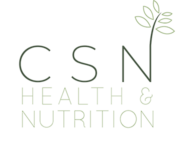National guidance is clear about how to feed infants and toddlers:
- Breast or formula milk only for first 6 months
- Between 6 and 12 months solid food should be introduced alongside breast/formula milk, slowly, with single fruits or vegetables at a time to prepare them to accept a range of different tastes and textures.
- Allow the baby to take the lead, not only in terms of what and when, but also how much they should eat.
- Drinks for children between 6-12 months should be limited only to water or milk (breast or formula – not cow’s milk)
- IF juice is given, it should only be at mealtimes and diluted such that water constitutes 90% of the fluid
- No rush to mush; although it’s tempting to puree everything, national guidance suggests that soft cooked vegetables or soft fruits are appropriate when your baby shows signs of being ready for solid food
- Salt and sugar should not be added to babies’ food
- Keep to minimally processed foods
- Introducing the baby to as wide a range of tastes and textures as possible may encourage healthy eating habits as they grow and develop.
- Solid foods should be provided using spoons or fingers, not spouts or teats.
This guidance is relatively simple (for more details, follow the links below), so why do new parents find it so challenging? Could it be because not only, with the best will in the world, older relatives give well-meaning advice based on out-dated knowledge and perceptions, or, perhaps more cynically, the food industry using marketing and communications tactics, confusing parents and caregivers, undermining their best efforts.
Misleading labelling
The will of parents to introduce their children to a wide range of fruit and vegetables may be undermined, with product names not reflecting the true contents, for instance, apparently vegetable based foods sweetened by fruit purees which form the greater proportion of the ingredients.
In the same way as the words “lite” and “only” may serve to mislead consumers wishing to maintain a healthy diet, use of the words “organic” and “preservative free”, as well as an indication of a high content of vitamins and minerals, may (mis)lead purchasers in believing that the products they are buying for infants and toddlers are healthy, despite containing high levels of salt and sugar.
Recent research suggests that many parents and carers trust commercial baby food manufacturers to supply products which are age-appropriate, healthy, nutritious, low in salt and sugar; there is an assumption that, if a food is labelled healthy, there is no need to examine the ingredient list. Regrettably, this is not always the case; the same research suggests that consumption of manufactured baby food is greatest between 7-10 months, exactly the same time when babies are exploring new tastes and textures, and yet many products, whether sweet or savoury, contain a high proportion of sugars, labelled with different names, thus predisposing the growing child to a preference for sweet tastes, a preference which may endure throughout their development.
It is well known that the World Health Organisation (WHO) recommend that babies are fed either breast milk or formula, exclusively, for the first 6 months, and yet, a significant proportion of the products manufactured for babies and toddlers is marketed at babies under 6 months of age, including meals, finger foods and drinks. Research has suggested, time and again, that babies’ digestive systems, not only are ill equipped to deal with anything other than breast or formula milk, but that it is conclusively associated with poor short term, as well as long term consequences, such as overweight/obesity as well as filling the baby up with products they neither need nor are good for them.
Snacks
Snacks can form a very valuable source of energy for the growing child; recommendations include fruit, vegetable sticks, bread, toast or plain yoghurts. Whole fruits, vegetables, and bread, whilst containing sugars, also contain fibre, are good sources of vitamins and minerals and, promote a healthy approach to eating “real” rather than manufactured foods.
Fruit based snacks are likely to be high in free sugars, and nutritionally little different to confectionary. Free sugars are different from sugars in whole foods such as fruit. Because they are “free” (from plant cell walls) it is easy to eat a great deal more, they lack the other nutritious components such as fibre, vitamins and minerals, are associated with increased energy intake (calories), overweight and obesity and, dental caries (cavities).
Snack foods appear to be an area of growth for food manufacturers, in both the world of baby foods and the wider market. It seems, therefore, that concerns about growing consumption of sugar, salt and energy, increasingly under the spotlight, extends to foods marketed for the very youngest members of our society. Nearly one quarter of the products aimed at babies and toddlers are finger foods, the most frequently purchased snack foods, and some of them comprise, nearly 50% sugar in one form or another. The risk, if it needs to be articulated, is a developing population with a greater tolerance and desire for sweet tastes and, suffering the consequences of overweight and obesity, as well as increasing the risk of dental caries, the main reason for hospital admissions in under-fives!
Drinks
As mentioned previously, national guidelines on fluids for children aged 6-12 months is to limit them to breast or formula milk, or water, and, for drinks offered to older children to contain no more than 10% fruit juice. Despite this guidance, , manufacturers promote the consumption of drinks containing fruit juice for children under 12 months and, market drinks which are as high as 50% juice, therefore a significant contributor to the consumption of free sugars and, increasing the risk of dental caries.
Conflicting advice
Manufacturers products and messages risk confusing parents on how to feed their children. National guidelines are intended to support parents to give their children the best start in life, and these intentions are being undermined in the name of profit.
Parents may be misled into believing that products sweetened with fruit purees are a healthy form of sugar, whereas, as mentioned above, they present the same risk as added sugars, honey or syrup. Equally worrying is the packaging; despite advice for infants to eat from spoons or fingers, and to drink from free-flowing cups, the mere fact that foods provided in pouches with nozzles, may imply – not withstanding messages printed on the packaging – that they are a safe and convenient way of consumption, unaware of the risk this presents to the health of the child’s teeth, whether formed or not!
In summary, it is time that the food industry supported care-givers in making health-promoting choices, and positioned their products more in line with national advice and guidance; it is clear that consumers place their trust in manufacturers, who have a responsibility extending beyond the financial wellbeing of their shareholders.
Sources:
https://www.firststepsnutrition.org/eating-well-early-years
https://www.gov.uk/government/publications/commercial-infant-and-baby-food-and-drink-evidence-review

